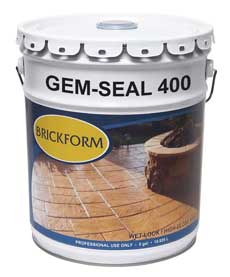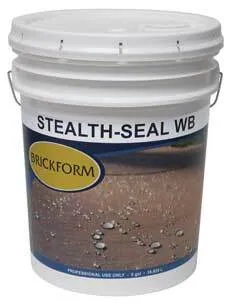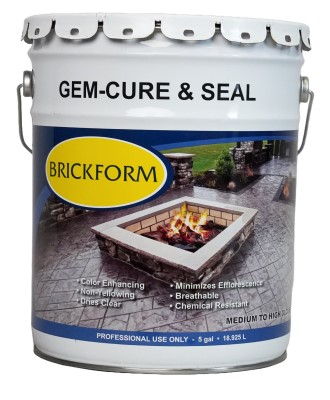The Complete Guide to Sealing Stamped Concrete
Whether creating an appealing driveway or a cozy patio retreat, stamped concrete adds decorative flair. But keeping it vibrant requires proper sealing—it’s non-negotiable. In this guide, we’ll cover the essentials for selecting a top-quality sealer, applying it like a pro, and maintaining stamped concrete’s original look. Protect your investment and let its decorative details shine for years with our expert tips.
Why Seal Stamped Concrete?
Stamped concrete driveways, patios, and sidewalks need sealer to maintain long and attractive use. This sealer protects the concrete from stains, discoloration, and moderate wear. Stamped concrete colors also look better when sealed. Sealer deepens color for a richer appearance.
Sealing stamped concrete starts with selecting the right sealer for the job. There’s a wide range of sealers on the market suitable for stamped and colored concrete. Each one has benefits that suit a particular kind of job. In general, however, it is important to stick to a sealer that you are familiar with, from a reputable manufacturer, and uses high quality ingredients. Follow manufacturer instructions closely every time you apply a sealer.
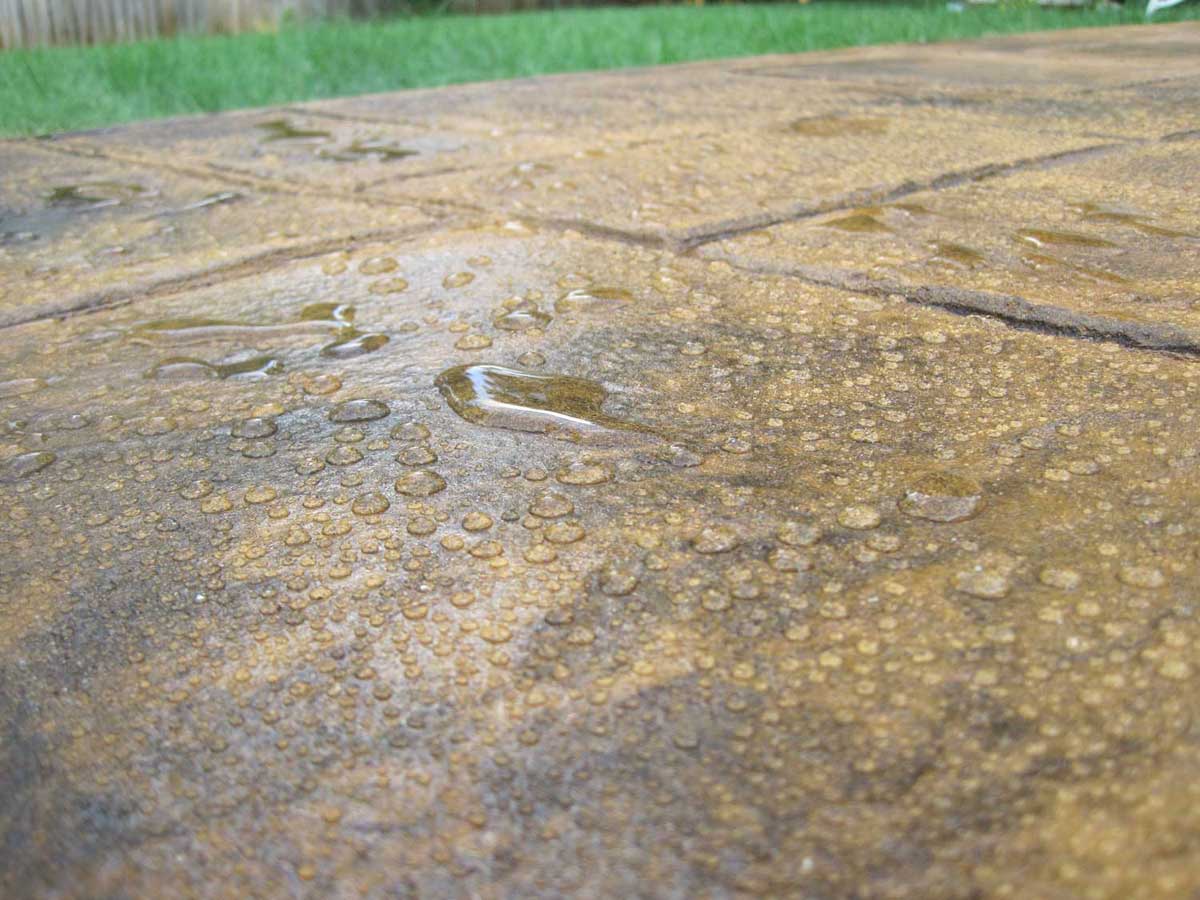
Choosing the Right Sealer
When sealing stamped concrete, it is important to choose the right material. This applies to the performance of the sealer as well as its appearance. For professional results, you should use the best quality sealer available. This means choosing a sealer from a reputable manufacturer that uses high quality acrylics, resins, or epoxies. A low quality sealer can fail too soon and lead to callbacks and lost earnings.
Characteristics of high-quality stamped concrete sealers
When sealing outdoor stamped concrete surfaces like driveways, patios, and walkways, it’s also crucial to select an exterior-grade sealer designed to withstand the elements.
Look for these key characteristics:
- UV Resistance: The sealer should be UV-stable to prevent yellowing, fading, or degradation from sun exposure.
- Weather Protection: Choose a sealer that provides resistance against rain, snow, freeze/thaw cycles, and temperature fluctuations.
- Slip Resistance: Ensure the sealer offers a slip-resistant finish, even when wet, to prevent falls and accidents.
- Breathability: A breathable sealer allows moisture vapor to escape, reducing the risk of peeling, bubbling, or delamination.
- Durability: Opt for a long-lasting sealer that can withstand foot traffic, vehicle exposure, and outdoor wear and tear.
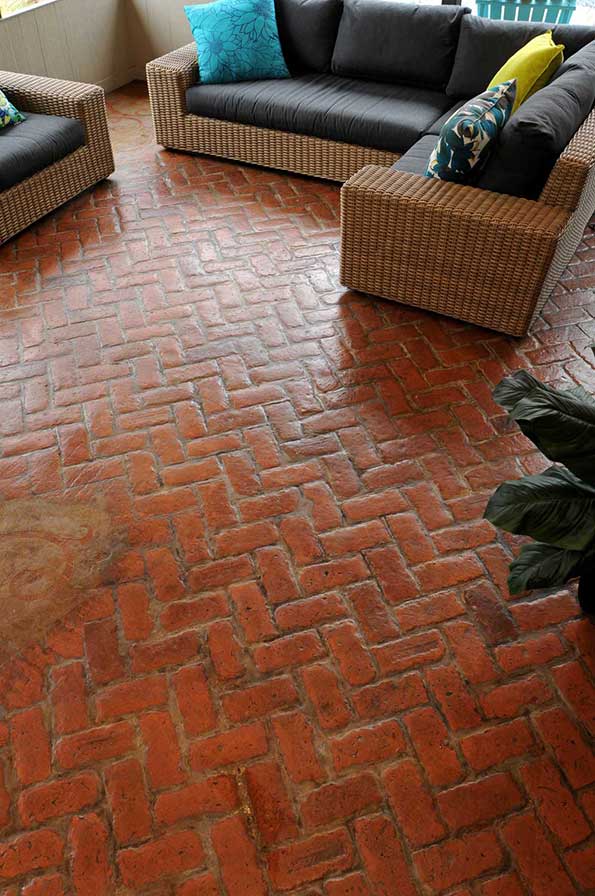
Gloss level and color enhancement
Gloss level is another important consideration when selecting a sealer. Most sealers will enhance or deepen color but they have varying levels of shine. Stamped concrete sealers range from satin to high gloss finishes. Satin finishes darken the color a little bit but add minimal shine. Satin sealers are good for a subtle, natural appearance. While, glossy sealers offer brilliant, high impact visuals. The highest gloss sealers are often referred to as “wet look” sealers because they mimic the appearance of wet concrete with a high sheen and noticeably deepened color.
Here are some Brickform sealer recommendations for stamped concrete:
- Gem-Seal for a durable, high-gloss, wet look
- Gem Cure & Seal to minimize moisture loss in newly placed concrete
- Stealth-Seal for effective protection with a no-gloss finish
- Safety-Seal for slip-resistant surfaces around pool decks or wet areas
Applying Sealer to Stamped Concrete
What you’ll need
Before you begin sealing your stamped concrete, here’s a list of the supplies you’ll need:
- Concrete sealer (you can choose between water-based or solvent-based)
- Concrete cleaner, degreaser or etcher
- Pressure washer or garden hose
- Stiff-bristle brush
- Roller or sprayer for applying the sealer
- Safety gear (don’t forget your gloves, mask, and goggles)
Success tips
Correct application is just as important as choosing the right sealer and having the right equipment. Sealer failures are almost always a result of mistakes during application or surface preparation.
Sealing stamped concrete isn’t too different from other kinds of concrete. Here are a few things to be aware of:
- Make sure the concrete is free of contaminants and other bond breakers. Liquid release residue and excessive antique release powder can cause sealer failure.
- Insufficiently profiled concrete is another cause of failure for sealer. New stamped concrete has a tight finish, meaning there isn’t much opportunity for the sealer to mechanically bond. A light etch, with a product like E-Etch, which is needed anyway to remove excess release, is enough to open up the pores and give sealer a good bond.
- Before sealing, make sure the concrete is completely dry. This helps prevent any moisture from getting trapped under the sealer.
- Also, keep in mind the weather conditions, like temperature and humidity, as they can impact how well the sealer adheres. Extreme heat and moisture during application can lead to blistering, bubbling or discoloration.
Sprayer versus roller
Application techniques for sealing stamped concrete are simple. Most sealers are applied using a standard, solvent-resistant pump sprayer. Spraying is best for even coverage. Some sealers, especially higher VOC sealers, can be rolled. In either case, it is best to apply in a crosshatch pattern between coats. This minimizes marks and reduces the likelihood of less than full coverage.
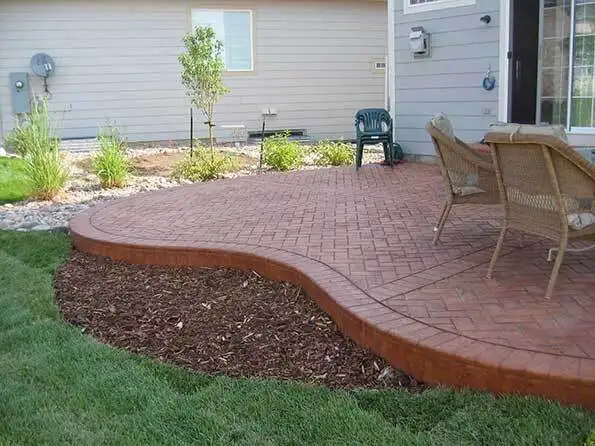
Maintaining Sealer
Sealer is there to protect the concrete. Maintaining the sealer is important to ensure long lasting and attractive concrete. Unmaintained or failing sealer looks bad and does not protect the concrete. For most sealers, you just need to clean it regularly with a neutral cleanser and clean water. When the sealer is worn through, reapply the sealer as directed in the product tech sheet.
Frequently Asked Questions
How long after pouring stamped concrete can you seal it?
For traditional sealers to bond properly to stamped concrete, the slab must be fully cured. Generally speaking, the curing process takes about 28 days. However, an alternative is to use a cure and seal product instead. These can be applied to freshly placed concrete much sooner. Cure and seals minimize moisture loss from evaporation and provide maximum strength, hardness and protection right from the start.
What happens if you don’t seal stamped concrete?
If you don’t seal your stamped concrete, you’re leaving it vulnerable to serious issues that’ll diminish its appearance and durability. For starters, the rich colors may fade quickly from UV exposure. Also, stains from spills, dirt, and other contaminants will penetrate into the porous concrete surface. Cracks are also more likely to form due to freeze/thaw cycles and the concrete’s inability to keep moisture out.
How do you tell if stamped concrete is sealed?
You might be wondering if your stamped concrete is sealed or not. It’s actually pretty easy to find out. Pour some water on your concrete and watch what happens. An unsealed surface will absorb it quickly, but if it’s sealed properly, the water should bead up. Checking for areas of wear, stains setting in, or fading colors are other giveaways that sealing is needed.
How often should stamped concrete be resealed?
Sealer should be reapplied every few years, according to wear and deterioration. When using the same sealer, you can typically get away with cleaning and a light profile. With heavy deterioration, sealer failure, or changing sealers, you’ll need to strip the existing sealer and start fresh.
See More
